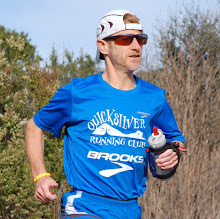Although I've been supporting POST for 2 decades, I still learned a big deal about their challenges and work thanks to a masterful presentation from their Director of Customer Engagement, Mark Medeiros. While there are many other trusts even in our area, no wonder why POST is regarded as a visionary and leading land trust across the country!
Coyote Valley represents a unique corridor between the two ranges forming our very own Silicon Valley, the Santa Cruz Mountains and Peninsula on the West side, and the Diablo range on the East. Living in a earthquake area, we can also named the corresponding faults: San Andrea and Hayward.
Now, corridor may be a more convoluted word than what it looks. I would have assumed that a straight line along Bailey Avenue for instance would be the easiest way to facilitate back and forth migrations and passage between both ranges. But that would make specialists gaggle as that would be way over simplifying Mother Nature, which likes to follow water sheds in particular. (Credit: illustration from Haley Grunloh, POST page.)
In addition to the water sheds winding through the valley, there are 3 major physical hurdles which have to be considered, a system called the triple barrier. Counter-intuitive is that, thanks to its numerous underpasses, the busy Highway 101 isn't the most challenging of the three but Monterey Highway with its surface concrete divider. Followed by the rail track. (Credit: illustration from Haley Grunloh, POST page.)
There has been decades of work to protect Coyote Valley between the key partners including the City of San Jose, the Santa Clara Country, the Open Space Authority. And POST.
At least we can celebrate and be grateful that the planned expansion of commercial development across Coyote Valley, in the 70s and 80s, turned to a flop and allowed farmers to stay around. Incidentally, as we tease ourselves, that left us, our IBM Silicon Valley Lab campus, in the middle of nowhere!
Here is a selection of great resources to learn more about the challenges and progress on that Coyote Valley matter:
- https://openspacetrust.org/blog/bay-nature-wildlife-connectivity/
- https://urbanwildliferesearchproject.org/the-corridor-project/
- https://conservationcorridor.org/cpb/Santa_Clara_Valley_Open_Space_Authority_2017.pdf (70 pages!)
- https://protectcoyotevalley.org/wp-content/uploads/2025/09/CoyoteValley-VitalLandscape-2024.pdf (4 pages, triple barrier problem)
- https://www.openspaceauthority.org/projects-programs/coyote-valley-master-plan/about-coyote-valley
- https://www.sanjoseca.gov/your-government/departments-offices/planning-building-code-enforcement/planning-division/citywide-planning/area-specific-plans/coyote-valley-corridor-study (San Jose urban impact study)
- https://scv-habitatagency.org/356/Wildlife-Connectivity (Santa Clara Valley & County)
Now, a burning question all IBMers had on their mind: as the decision has been made and publicly announced, to close the renowned Almaden IBM Research Center (ARC), relocating hundreds of eminent researchers to the site on the other side of the hill, Silicon Valley Lab (SVL), on Bailey Avenue, what is going to happen to this landmark site? Will that be an opportunity to transfer this major open area into the local pool of preserved lands? As opposed to selling it for tenths of millions of dollars of income and profit... A challenging dilemma... And a big unknown for non-insiders...
Bottom line, the protection of Coyote Valley, while in progress, will likely take several more decades to set a safe and sustainable corridor for wildlife to reclaim their original passage to roam between the two ranges. POST is close to turn 50 and is the perfect partner to think and act long term to restore nature's rights in and around our buzzing Silicon Valley. A model for the World!



















